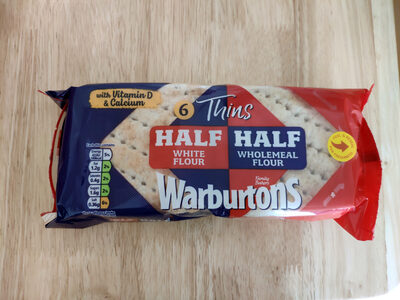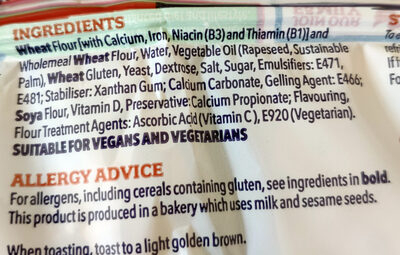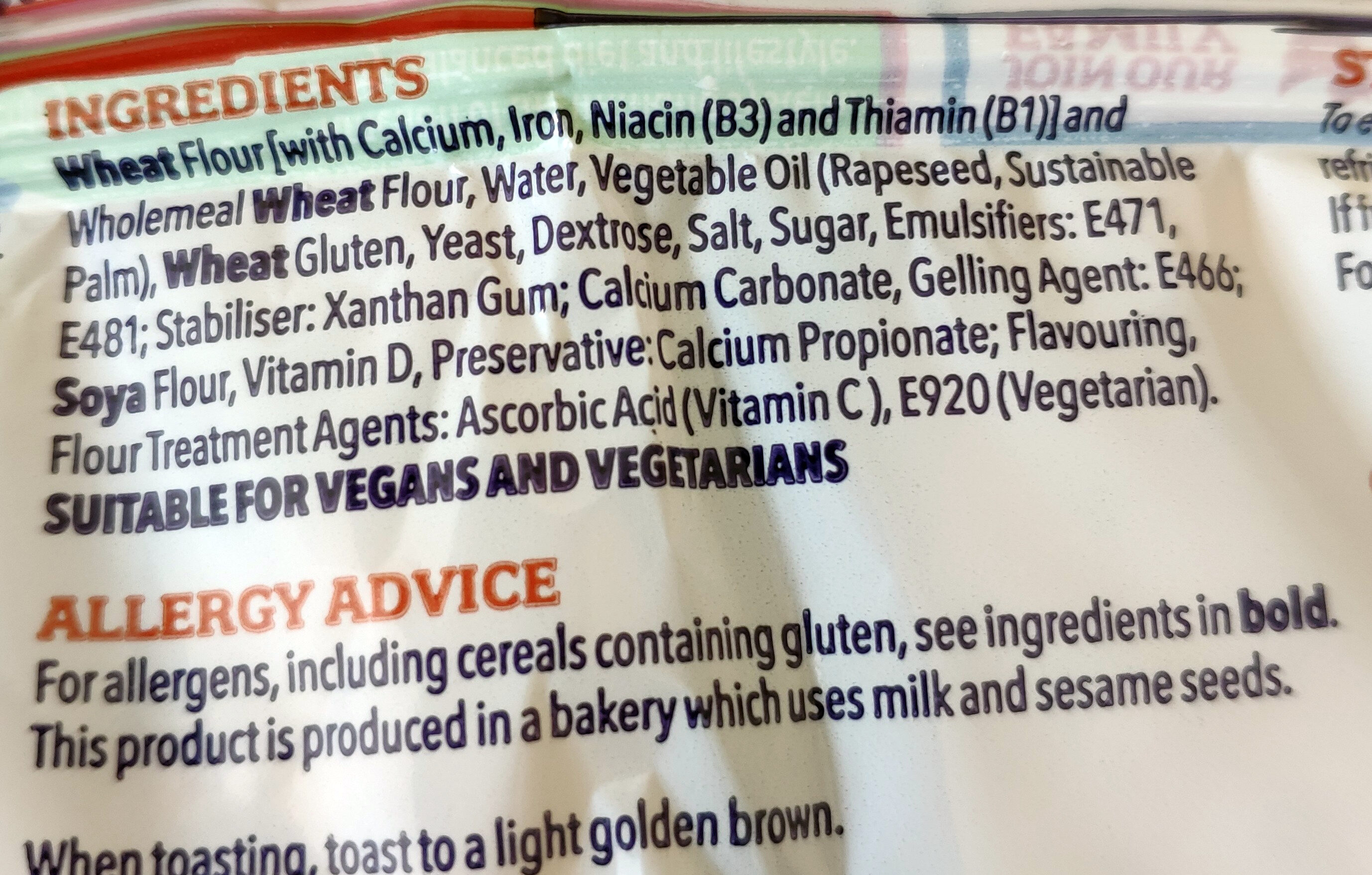Half and half thins - Warburtons - 6
This product page is not complete. You can help to complete it by editing it and adding more data from the photos we have, or by taking more photos using the app for Android or iPhone/iPad. Thank you!
×
Barcode: 5010044009087 (EAN / EAN-13)
Common name: Sliced thin white rolls made with 50% wholemeal flour
Quantity: 6
Packaging: Mixed plastic film-packet
Brands: Warburtons
Categories: Plant-based foods and beverages, Plant-based foods, Cereals and potatoes, Breads
Labels, certifications, awards:
Vegetarian, Halal, Kosher, Vegan, Halal Food Authority, Kashrut division of the London Beth Din, Vegetarian Society Approved, Vegetarian Society Approved Vegan


Link to the product page on the official site of the producer: https://www.warburtons.co.uk/products/th...
Stores: Tesco
Countries where sold: United Kingdom
Matching with your preferences
Environment
Packaging
Transportation
Threatened species
Report a problem
Data sources
Product added on by kiliweb
Last edit of product page on by .
Product page also edited by alia, charlesnepote, jifjaff, openfoodfacts-contributors, yuka.IZAdBcSuEuUGP8ri660Z_wO6DvbdMth8Bl4LoQ.










